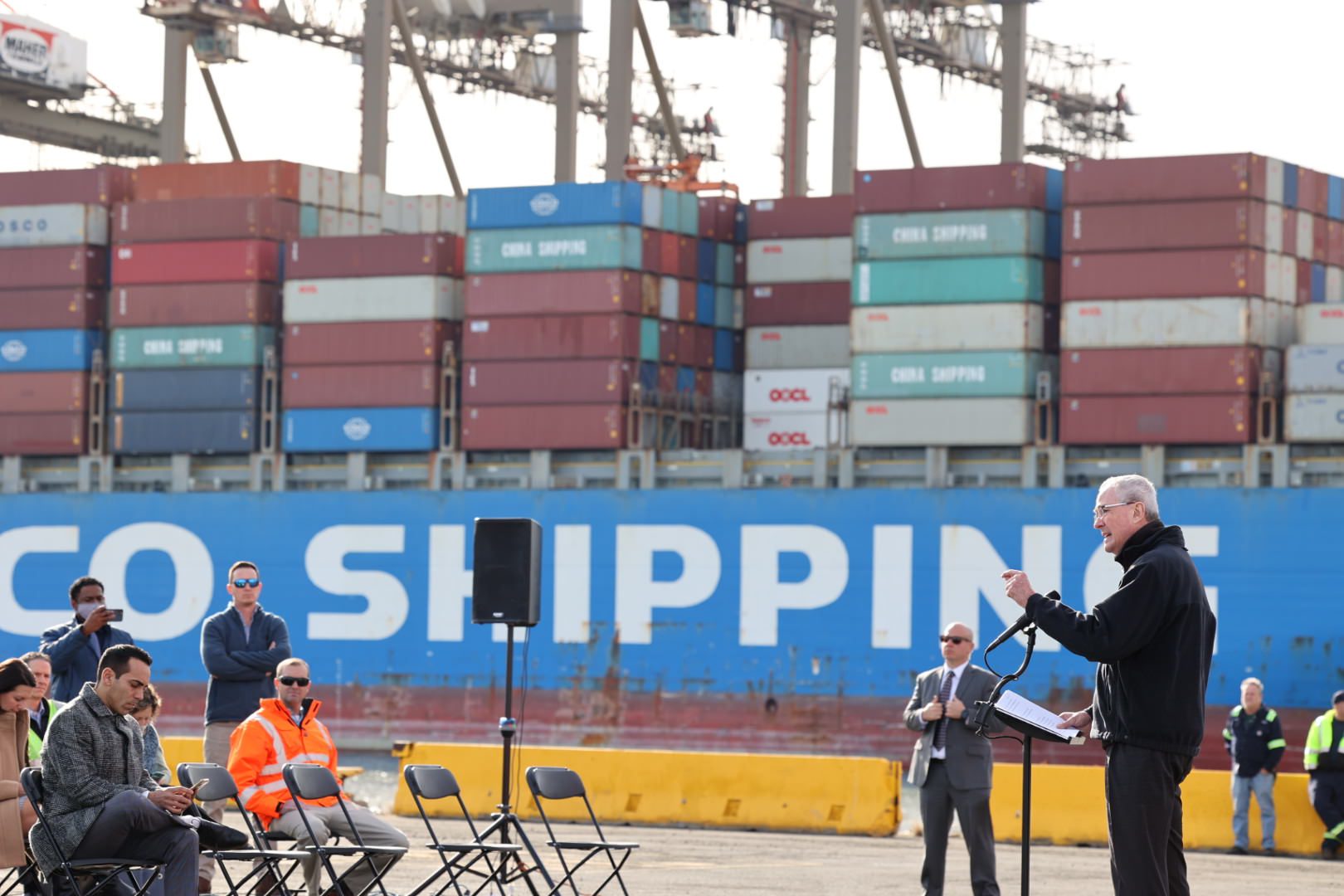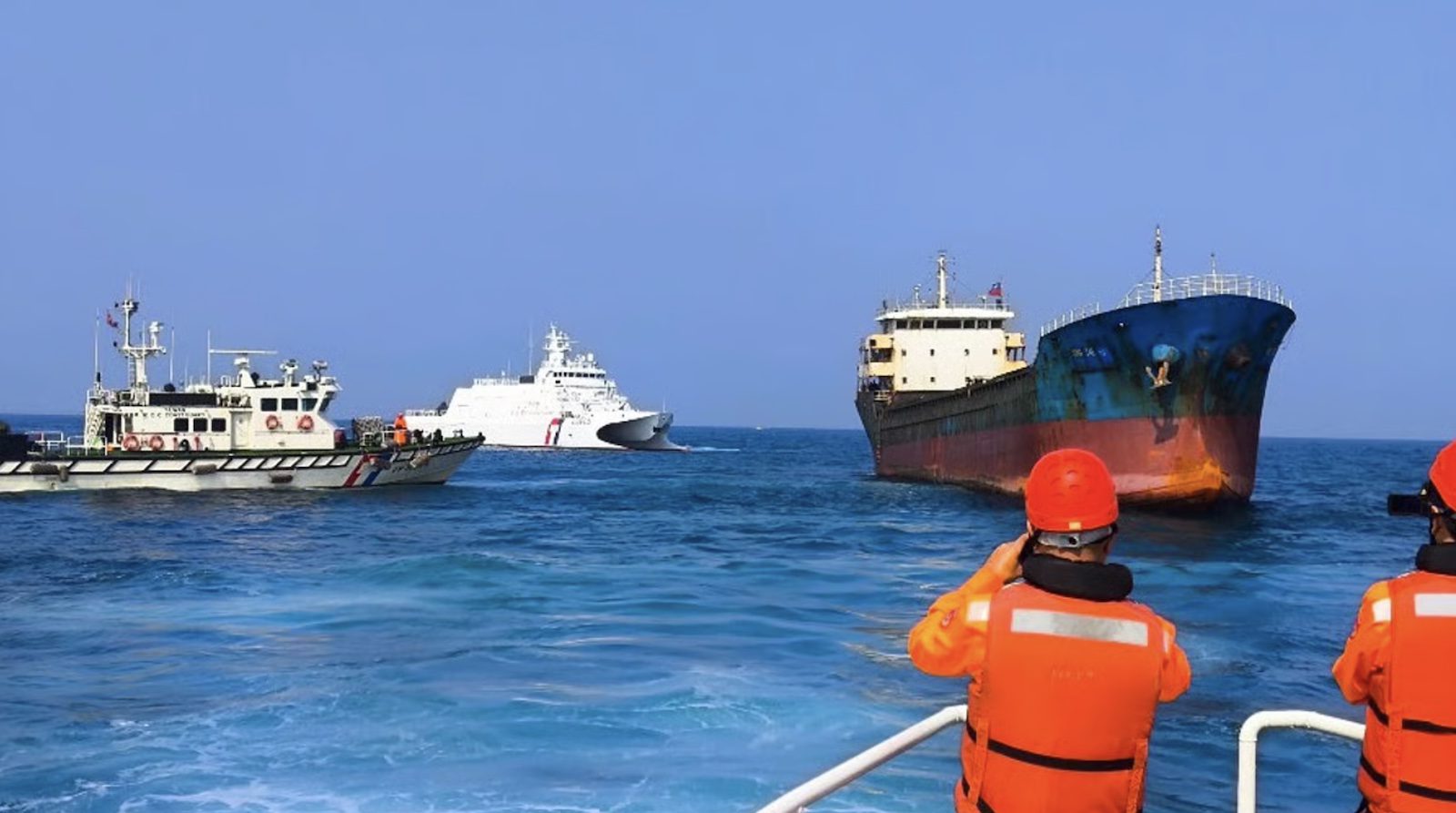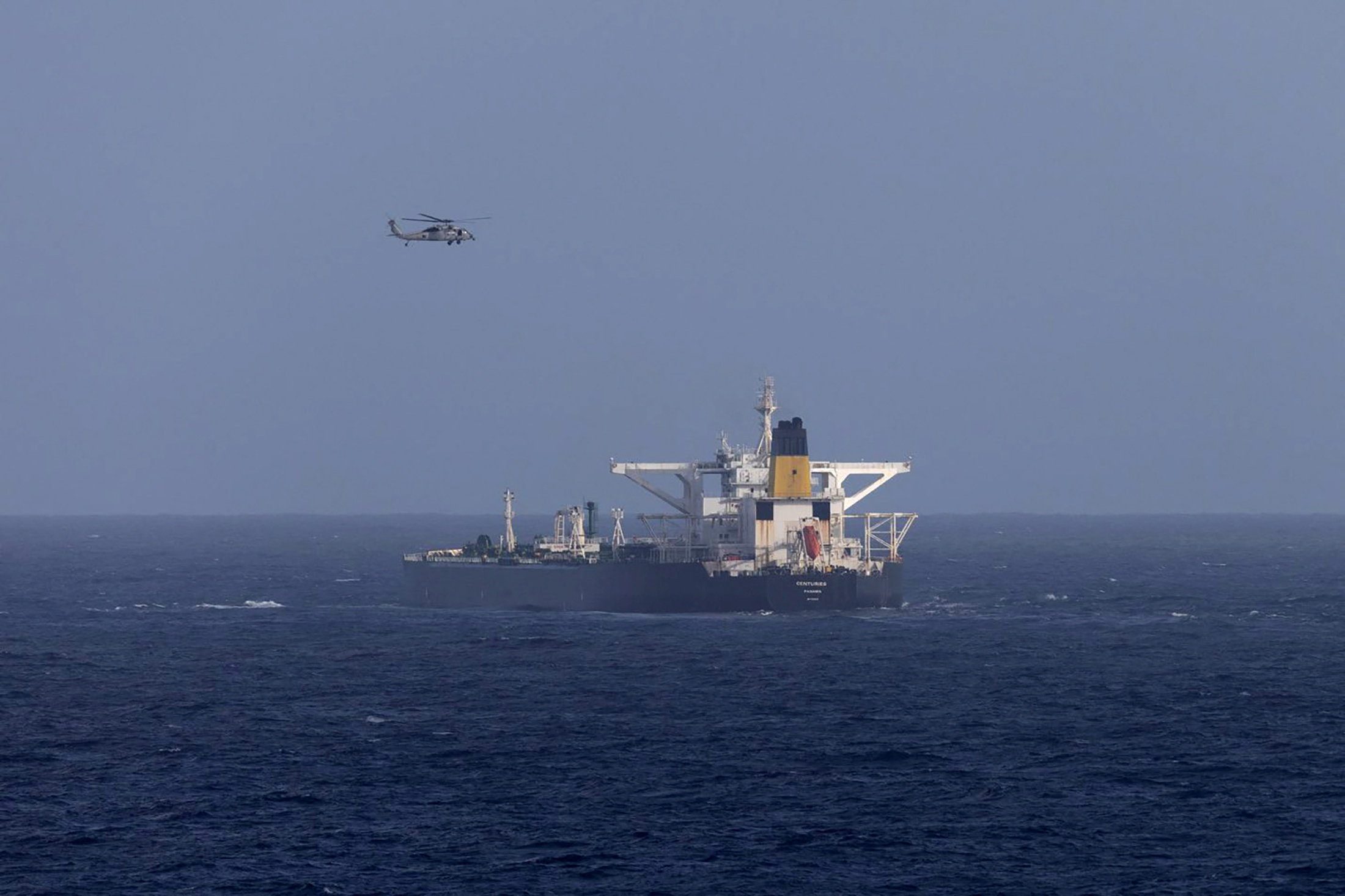by John Konrad (gCaptain) During the Second World War a massive amount of money and materials flowed through New York harbor providing victory for Europe but also profits for the Mafia. In 1948 journalist Malcolm Johnson published a Pulitzer Prize-winning series of articles exposing mafia control of the waterfront resulting in congressional hearings, Marlon Brando’s 1954 film On The Waterfront, and a unique agency – the Waterfront Commission of New York Harbor – set up to fight the mafia. That organization still exists today but does it remain relevant?
Yesterday Financial Times journalist Joshua Chaffin published an exposé into the inner workings of port operations at The Port Authority of New York And New Jersey – the powerful public-private entity that operates and regulates America’s second-largest port complex – and asks if efforts to eliminate the Waterfront Commission is the work of business interests looking to streamline efficiencies or the mafia itself.
Related book: Empire on the Hudson – Political Power and the Port Authority of New York and New Jersey by Jameson W. Doig
According to Chaffin serious efforts to eliminate the commission began in 2018 when former Republican governor of New Jersey Chris Christie signed legislation withdrawing his state from the joint commission. The State of New York disagreed, took the matter to court, and won an injunction, but in March Christie’s Democratic successor Phil Murphy announced he was appealing that decision in the US Supreme Court.
“I will not give up the fight to protect New Jersey’s interests, which are poorly served by a commission that operates without transparency and has long outlived its usefulness,” said Murphy in March. “I thank my partners in the Legislature, labor, and industry for continuing this fight.”
Why is New York trying to prevent New Jersey from closing the commission? According to court documents New York state and commission officials claim the waterfront remains in the “ironclad grip” of a corrupt union and organized crime, where kickbacks and crooked labor contracts are commonplace.
Related Book: The Power Broker: Robert Moses and the Fall of New York by Robert A. Caro
“Despite the commission’s notable successes, organized crime still very much continues to exist on the waterfront,” Walter Arsenault, the commission’s executive director, stated in a court filing earlier this year, objecting to New Jersey’s move. The commissioner has also directly accused the International Longshoremen’s Association of mafia connections. “You can’t throw a stone at the port without hitting the son, the daughter, the son-in-law, the nephew, the cousin, the godson of a ‘made’ guy,” he said in 2018.
The New York Shipping Association – which represents terminal operators and major ocean carriers like Maersk, CMA CGM, and Mediterranean Shipping Company – says the unions and Waterfront commission just “don’t like each other” suggesting the commission’s claims of Mafia involvement are overblown. That could the case but the association has been careful in the past not to anger a union that could go on strike and shut down port operations overnight.
This debate comes at a time when all eyes are on the west coast where labor negotiations between ocean carriers and terminals in the Port Of Los Angeles and the International Longshore and Warehouse Union have been delayed. The upcoming expiration of labor contracts with more than 22,000 West Coast port workers this summer could throw a wrench in the recovery plans of the twin hubs of Los Angeles and Long Beach, which handle about 42% of all US containerized trade with East Asia.
There is a lot more to this story than gCaptain can summarize so head over to the Financial Times to read the full report: On the waterfront: the political fight over organized crime at the Port of New York by Joshua Chaffin

 Join The Club
Join The Club











